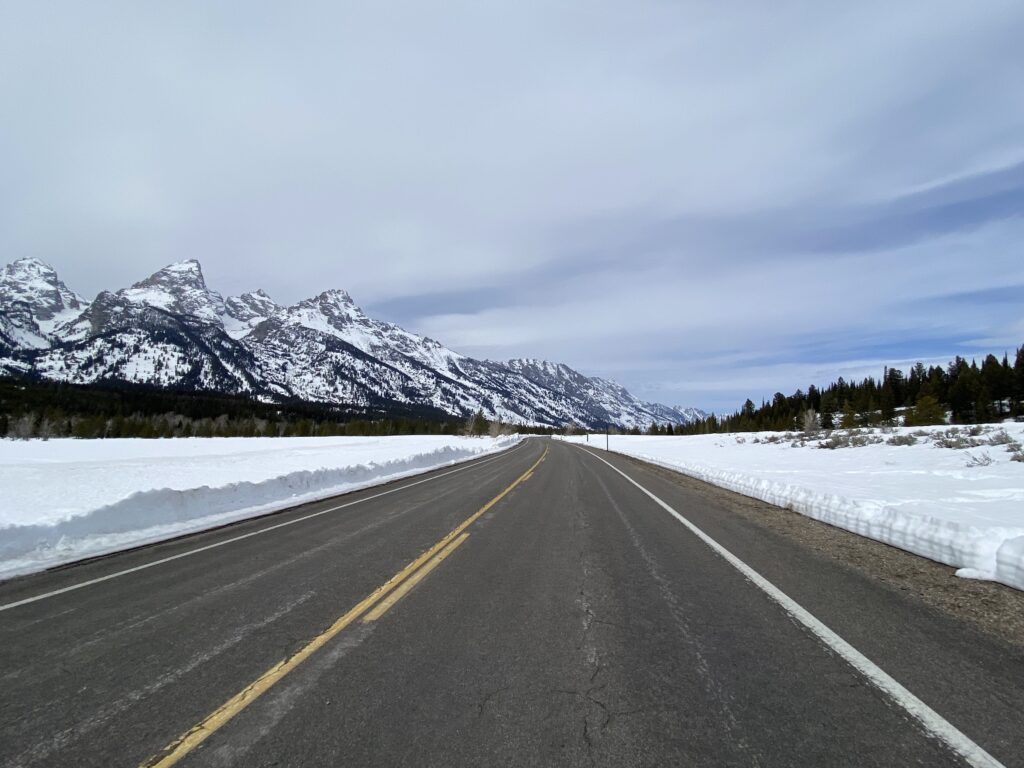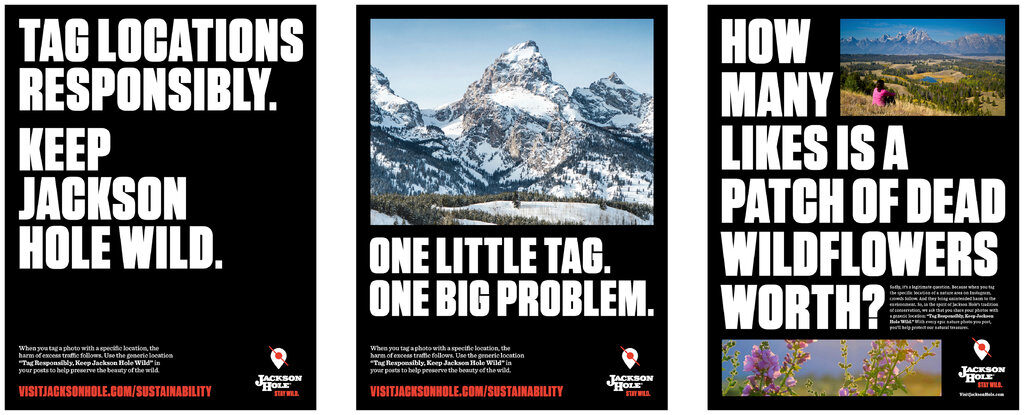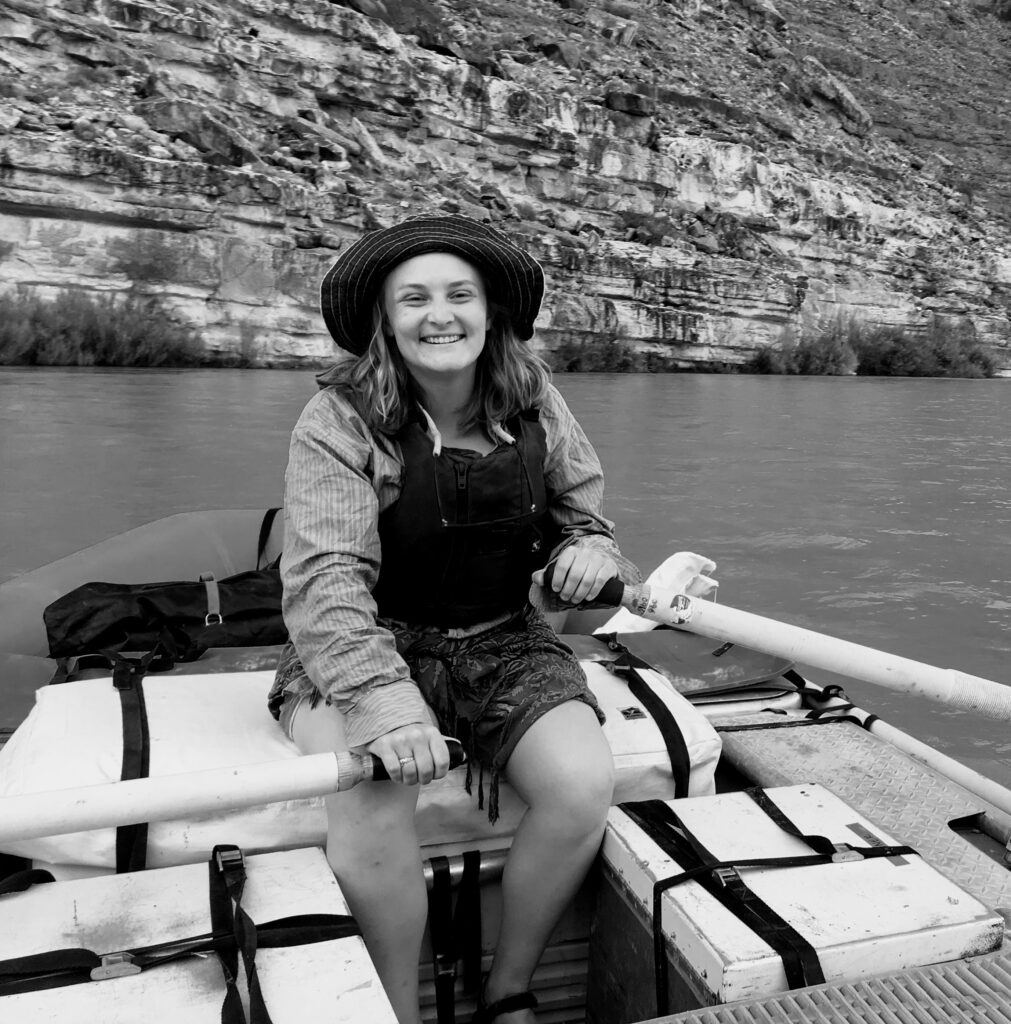The “Old West” and the “New West.” These terms are often used to characterize the transformation of rural western economies and communities from places oriented around extractive industries to those based around natural amenities and recreation (Bryson & Wyckoff, 2010; Krannich et al., 2011; Shumway & Otterstrom, 2001). This transformation is driven by in-migration from urban areas and is often accompanied by rural gentrification, leading to soaring housing prices, income inequality, a forcing-out of long-term residents and the middle class, and general sociocultural conflict (Ghose, 2004; Hines, 2010, 2012; Ulrich-Schad, 2018).

Teton County, Wyoming is the poster child for the New West, and many people flocking to the area are attracted by the proximity to Grand Teton National Park (shown here).
Since the late 1990s, literature focused on the New West has found that much of this migration is driven by natural amenities and quality-of-life factors rather than by economic factors (Jones et al., 2003; Krannich et al., 2011; Winkler et al., 2007). With the recent rise of remote work, it’s even less likely that economic factors will be required to draw people to these areas. Indeed, some authors argue that the COVID-19 pandemic has actually increased the appeal of rural areas that are rich in natural amenities (Dimke et al., 2021). As a result, in-migration and rural gentrification are having a greater impact in areas that feature an abundance of natural amenities, recreational infrastructure, and proximity to public lands (Hjerpe et al., 2020; Winkler et al., 2007). As we think about combating the impacts of rural gentrification, it is important to think about natural amenities, such as scenic views, open space, recreation opportunities, wildlife, and wilderness, as potential drivers of this trend.
Correspondingly, we must consider how we communicate about these natural amenities to residents, tourists, and the outside world. Humans are attracted to narratives and frames that help us construct meaning and understand the world (Farrell, 2017), and scholars have shown that those narratives can impact our cognitive processing, our prioritization of problems and solutions, and the enactment of laws and policies (Louder & Wyborn, 2020). What narratives do we promote about nature and the environment in advertisements, local and national media, and environmental campaigns about the New West?

An advertisement from a recent campaign discouraging the geotagging of images in Jackson Hole, WY.
Are natural areas framed as fragile and in need of urgent protection, or are they framed as boundless opportunities for adventure and recreation? The narrative frames that we use to promote the natural areas in the New West have the potential to impact the ways that people think about and interact with those natural areas – and whether they decide to pack up and move there.
Works Cited
Bryson, J., & Wyckoff, W. (2010). Rural gentrification and nature in the Old and New Wests. Journal of Cultural Geography, 27(1), 53–75. https://doi.org/10.1080/08873631003593232
Dimke, C., Lee, M. C., & Bayham, J. (Eds.). (2021). COVID-19 and the Renewed Migration to the Rural West. https://doi.org/10.22004/ag.econ.311309
Farrell, J. (2017). The Battle for Yellowstone (Vol. 1). Princeton University Press. https://doi.org/10.23943/princeton/9780691164342.001.0001
Ghose, R. (2004). Big Sky or Big Sprawl? Rural Gentrification and the Changing Cultural Landscape of Missoula, Montana. Urban Geography, 25(6), 528–549. https://doi.org/10.2747/0272-3638.25.6.528
Hines, J. D. (2010). Rural Gentrification as Permanent Tourism: The Creation of the ‘New’ West Archipelago as Postindustrial Cultural Space. Environment and Planning D-Society & Space – ENVIRON PLAN D-SOC SPACE, 28, 509–525. https://doi.org/10.1068/d3309
Hines, J. D. (2012). The Post-Industrial Regime of Production/Consumption and the Rural Gentrification of the New West Archipelago. Antipode, 44(1), 74–97. https://doi.org/10.1111/j.1467-8330.2011.00843.x
Hjerpe, E., Hussain, A., & Holmes, T. (2020). Amenity Migration and Public Lands: Rise of the Protected Areas. Environmental Management, 66(1), 56–71. https://doi.org/10.1007/s00267-020-01293-6
Jones, R. E., Fly, J. M., Talley, J., & Cordell, H. K. (2003). Green migration into rural America: The new frontier of environmentalism? Society and Natural Resources 16: 221-238. http://www.fs.usda.gov/treesearch/pubs/20287
Krannich, R., Luloff, A. E., & Field, D. (2011). “Old West” and “New West”: A Regional Perspective. https://doi.org/10.1007/978-94-007-1263-8_4
Louder, E., & Wyborn, C. (2020). Biodiversity narratives: Stories of the evolving conservation landscape. Environmental Conservation, 47(4), 251–259. https://doi.org/10.1017/S0376892920000387
Shumway, J. M., & Otterstrom, S. (2001). Spatial Patterns of Migration and Income Change in the Mountain West: The Dominance of Service‐Based, Amenity‐Rich Counties. The Professional Geographer, 53, 492–502. https://doi.org/10.1111/0033-0124.00299
Ulrich-Schad, J. D. (2018). “We Didn’t Move Here to Move to Aspen”: Community Making and Community Development In an Emerging Rural Amenity Destination. 25.
Winkler, R., Field, D. R., Luloff, A. E., Krannich, R. S., & Williams, T. (2007). Social Landscapes of the Inter-Mountain West: A Comparison of ‘Old West’ and ‘New West’ Communities*. Rural Sociology, 72(3), 478–501. https://doi.org/10.1526/003601107781799281

Molly Ryan, Research Assistant | Molly Ryan is a Master of Environmental Management candidate at the Yale School of the Environment specializing in ecosystem management and conservation. She grew up in Flagstaff, Arizona, where she originally became interested in the intersection between people and natural places. Through her degree, Molly hopes to better understand the social aspects of conservation and land management, with a particular emphasis on stewardship behavior, environmental communication, and equity. Prior to YSE, Molly received her B.A. in Environmental Studies and Geography at Dartmouth College and worked as an analyst in the private sector conducting visitor use management research for the National Park Service. See what Molly has been up to. | Blog
